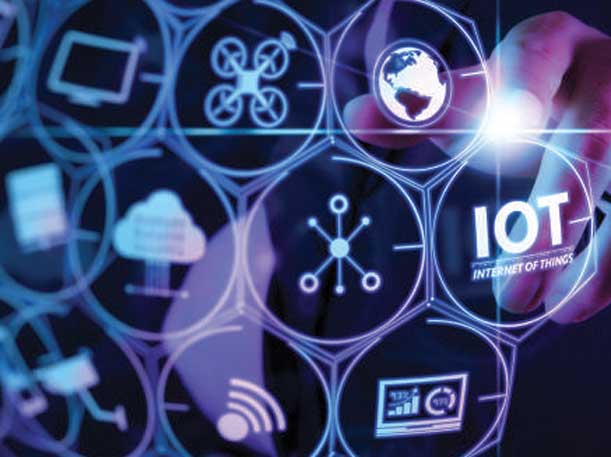Vodafone Business’ David Joosten: ‘The Ambition For The Channel Is $100M’
The telecom giant’s U.S. leader and director of partner markets shares the ambitious work that Vodafone is doing to revamp its U.S. strategy with its eyes set on the indirect channel.

David Joosten
Vodafone Business, part of U.K.-based telecom heavyweight Vodafone Group, is in the midst of evolving its strategy in the United States with an ambitious plan to double down on the indirect channel.
The company is no stranger to working with some of the largest multinational companies, fast-growing enterprises, government agencies and startups. The firm has been providing global, regional and local telecom services for more than 40 years. But in the last year, Vodafone, under the leadership of David Joosten, president and chairman of Vodafone U.S. and director of Americas and partner markets for Vodafone Business, decided that the partner channel is the way to reach more customers with its evolving services portfolio, which today includes mobile and fixed connectivity, unified communications, cloud and IoT offerings.
The indirect channel, according to Joosten, is critical in helping the telco build and create end-to-end IT and IoT solutions.
CRN caught up with Joosten to talk about the work he and his team have been doing over the past year to lay the groundwork for the company to grow its U.S. business through the partner channel, the partner program overhaul, and the global opportunities that Vodafone products and services present to the partner ecosystem.
Here are excerpts from the conversation.

How have you and your team evolved Vodafone’s channel strategy in the Americas over the last year?
Vodafone in general has always had direct sales activity, whether that was here in the U.S. or anywhere else, but I think over the last couple of years as an organization, we have changed that. As we continue to have different ways of going to market, we set up two motions a little over a year ago. One was through system integrators, which was something we’ve done in the past and hadn’t been that successful with it. So, we decided to revamp that program a bit more [with] dedicated resources or more dedicated integrators to work with. We said: “Okay, we’re going to give system integrators another chance” [with] a large focus on automation to ensure that whatever we sell to them, it’s automated [and] they can easily integrate or services into their systems. This past year, we chose to work DXC and Accenture predominantly, but not exclusively — it’s something we continue to look for other system integrators here in the U.S. to resell our services through two motions: one is to sell with, and one is sell-through. Accenture, for example, we sell with, so whether it’s mobile or fixed IoT, they can sell some managed services on top of that that they then can control. And then sell-through is we sell to [the partner] and then they sell to their customers.
The second motion was around channel partners, where we saw, especially in the U.S. compared to any other region in the world, channels is a big thing here. Maybe we were even late with it. But we started off with two TSBs [telecom service brokers, formerly known as master agents] AppDirect and Avant. The entire referral model in the U.S. is something we were not familiar with [and] put quite a lot in resourcing and getting those contracts up and running and quite a lot of investment went into automation and training to make sure there was enough resources to support when we sell something [in the referral model]. For now, I would say those strategies are paying off very well with very good pipeline generation. Channel sales though SIs are actually massively increasing on a quarterly basis. we feel confident that was a good choice to move towards.

How much of Vodafone Businesses’ U.S. business do you want to do through the channel?
We did about half a billion in the Americas and the ambition for the channel is $100 million. We haven’t been doing that, but it’s only a year old. I think we will assess when we get towards the end of this year — which is March next year — we’ll see where we get to. For at least the next three years, we need to get about $100 million of that incremental — not replacing the direct sales force — but really add additional streams on that. Why do we think it’s possible? All the work our direct sales force is doing continues to grow — it grew quite significantly last year as well. And basically, what we do through channel is a new segment of customers that we are targeting.
I think our advertising in the U.S. is that we give access to the world to U.S. enterprises, so we are not competition for AT&T and Verizon. That’s our strength — we don’t have the largest network in the US. We do have the largest network and I would say connectivity options U.S. and beyond. So, enterprises that need international connectivity solutions in Europe, Middle East Africa and in Asia, [that’s] basically our differentiator. And beyond the top 200 that we see in the U.S. there is definitely a few more thousands of companies that we probably didn’t cover well enough in the past and should have that have requirements outside of the U.S. So, by targeting that through the indirect motion, we do feel the potential to grow quite significantly in the next three years.
Tell me about how you and your team have overhauled Vodafone’s partner program over the last year?
The first thing was around setting it up — signing the necessary agreements with the partners, agreeing on referrals and those kinds. What we then did was invested in training [and] making sure there is a necessary collateral for the agents. I think what is very important for us is building relationships with the partners and agents. People do business with people, so it’s very important that you’re top of mind when an opportunity comes up, or a renewal, or who they talk to in the case of escalation. We’ve spent a lot of time and effort in just understanding the channel and the companies we’re doing business with.
We’ve grown the team quite significantly over the last couple of months, we’ve continued to invest in people, not just from a sales perspective, but more from a service and customer solution perspective because the one thing that we realized when we started this is that if an agent or a TSB sells your solution, if the implementation goes wrong the first time, the chances of the second time are going to be very limited. So, lots of focus on understanding processes between the partner and us [and] making sure these are streamlined be very agile and fast in responding to queries, because if it takes us two months for an answer or even a price, they’re not going to [wait], so everything in the pre-sales needed to be sped up. Post sales and delivery needed to be very fluid and transparent, and lots of communication around delivery, those kinds of things. Then certainly, an agent that doesn’t get their commissions is not going to be a very happy agent. So, those [are the] things we’ve invested in and automated the process quite heavily. Now it’s around continuously growing. It’s [about] investing in those partnerships that are that are growing and to disinvest in the ones that are not, so we’re continuously on the lookout for other players.

What represents a big area of opportunity for partners today?
I think IoT is probably a bit under evolved overall. We don’t see a lot of IoT opportunities coming up at this point. So, for that, we are doing two things. One is we are going to launch a very simple IoT bundle — a very simple concept that allows customers international IoT connectivity [that can be] easily onboarded and to also easily understand how the pricing mechanism works because international IoT connectivity and its pricing is very fragmented. It has a lot of options. There’s a lot of different volumes and bundles that are that need to be taken into consideration. So, for that, to simplify that journey, [we’re] coming up with a bundle that is very easy to market.
Around IoT and end to end solutions, there are some [offerings] that we’re going to launch [and] again, easy, off the shelf solutions that we can put into the channel. If there’s one thing that you need to be careful with is what we put in the channel. It can’t be too complicated and not everything can be bespoke. So, we have some simpler end-to-end solutions in the channel. And then it’s certainly about training on how to sell IoT solutions. What we do see through channel is a lot of IT-type sales, whether it’s fixed circuits, mobile connectivity, antennas, all that kind of stuff for very much oriented towards an IT seller, whereas IoT is typically sold in operational technology and uncoupling those kinds of services or opportunities; you need a different kind of sales approach because the end customer or the buyer is a very different person than who the channel is used to. We think it’s very important that we educate the channel on how to sell to the different personas.
What do you want partners to know about the opportunity?
I think we are learning our way into the channel, but we don’t know everything. So, if there are partners that have customers with international requirements or requirements around IoT, definitely come talk to us. We are absolutely open for business. For customers that are looking for a different thing than domestic operators can [offer], we’re the partner to talk to when you have international requirements.